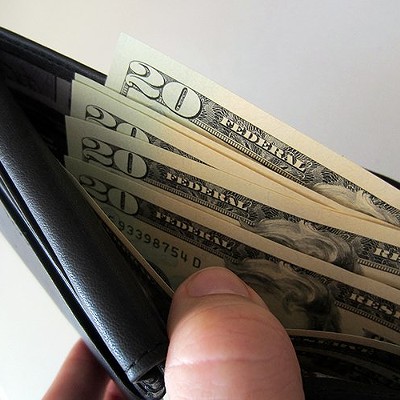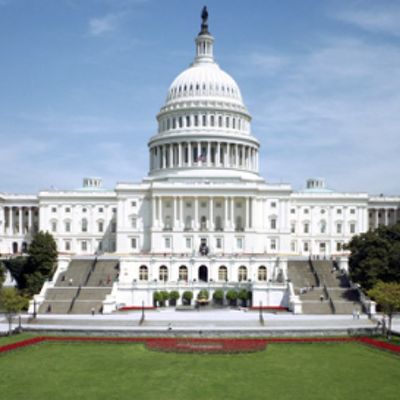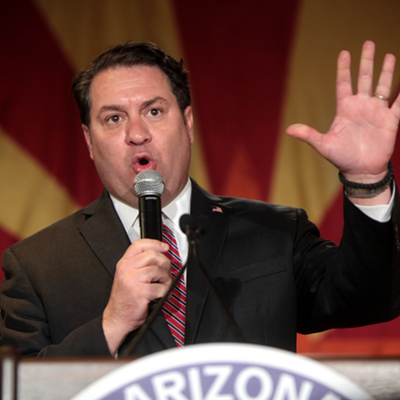THE FINAL ANALYSIS
The Skinny has spent the last week dissecting Election 2005 with pundits, pollsters and sports fans to develop the following Top 10 list of reasons why Democrats Nina Trasoff and Karin Uhlich trounced Republicans Fred Ronstadt and Kathleen Dunbar:1. The Democratic message--"Take Back City Hall From Wealthy Special Interests and Restore Tucson Values"--was repeated so often that even Nina and Karin started to believe it was true.
2. The GOP candidates ran directionless campaigns that did little to either inspire the base--which didn't care all that much for either incumbent--or capture crossover voters.
3. Democrats and their non-special-interest union allies poured tens of thousands of dollars into an independent campaign--Tucsonans for Accountable Government--that hammered Republicans on everything from cutting programs for kids to selling out to Big Oil. (We're keenly interested to see how the Democrats deal with the Kinder Morgan pipeline that poses such a threat to the lives of women and children in our community. Perhaps they'll shut down the flow of gas to Maricopa County. Wonder what Gov. Janet Napolitano would think of that?)
4. The Growth Lobby's big indie campaign, Tucsonans for Bipartisan Government, never landed a decent punch against the Democrats, although its sheer audacity in creating a slate of Ronstadt, Dunbar and Democrat Steve Leal was good for some laughs.
5. Paul Eckerstrom is no Martin Bacal.
6. Dunbar v. Amphi.
7. Political consultant George Gobble's tactical decision to run the Ronstadt campaign from Sicily.
8. The Republican candidates thought they'd be able to raise big bucks, so they abandoned the city's matching-funds program. In the end, they barely raised what they would have gotten if they had taken the public dollars--and they spent a lot of time and energy scraping together contributions that could have been more productive elsewhere. The decision also gave Democrats another chance to repeat the mantra of how the incumbents had sold out to Wealthy Special Interests. (Then again, using the matching-funds program wouldn't have significantly blunted that criticism; the Democrats never let the facts get in the way of a good hit piece this time around.)
9. The Bush slump energized Democrats, who wanted to taste Republican blood--any Republican blood. As the numbers rolled in Election Night at Hotel Congress, Democrats were partying like people who hadn't gotten laid in five years.
10. The Dems ran a high-speed Get-Out-The-Vote effort, using everything from troops on the ground to phone banks (partly, we gather, as a dry run for Democrat Jim Pederson's uphill battle against Republican Sen. Jon Kyl next year). We got several push-poll calls from the unions busting on the Republicans and urging us to vote Democratic, but we got only one call--evidently from a phone bank in Iowa--urging us to vote for Fred and Kathleen, because the Republicans were leading "Tuckson" in the right direction. Hardly inspires a sense that your candidates are in touch with the community.
PLAYING PERCENTAGES
You might have noticed that despite all the mailers, the canvassing, the phone calls and the Barney Bus, Election 2005's overall final turnout was a measly 24.7 percent. That's a lower percentage than the same races drew four years ago, when more than 27 percent of the voters came out to play.But in raw numbers, more people voted. Thanks to a big voter-registration push in last year's presidential race, there were 248,777 registered voters on the rolls last week, compared to 193,969 in 2001. So the Get-Out-The-Vote effort did get more warm bodies to the polls: 61,548 this year, compared to 53,332 four years ago. Both years are dwarfed by turnout in the 2003 city elections, in which 77,857 voters cast ballots (which just goes to show you what a mayoral race can do to motivate voters).
The Democrats had some marginal success in getting more voters out in their strongholds, where nearly three out of four voters went for Nina Trasoff and Karin Uhlich. In westside Ward 1, 7,939 voters (or just less than 20 percent) cast ballots, an increase of 1,129 voters from 2001. In southside Ward 5, the bump was less noticeable: 5,009 voters (or 17 percent) cast ballots, up--big whoop--298 ballots from 2001.
The biggest jump in the number of voters was in midtown Ward 6, which Republican Fred Ronstadt had represented for the last eight years. A total of 13,923 voters (or almost 30 percent) cast ballots--an increase of 3,003 from 2001. Ronstadt landed just 27 percent of the vote, compared to 41 percent in 2001. Republican Kathleen Dunbar ran slightly ahead of Ronstadt, getting 30 percent, compared to 40 percent four years ago.
In Ward 3, which Dunbar had held for one term, 8,377 voters (or 22 percent) cast ballots, about 1,000 more than in 2001. Despite her record of service to constituents, Dunbar got only one of every three voters, compared to 40 percent in her first run. Ronstadt didn't even reach 30 percent, after managing better than 41 percent in 2001.
Republican support collapsed on the city's eastside, where they have dominated in recent city elections. In Ward 2, 15,850 voters--or nearly 31 percent--cast ballots, compared to 13,975 in 2001. Four years ago, both Dunbar and Ronstadt got about 63 percent of the vote. This year, Ronstadt lost the ward altogether, getting only 46 percent, while Dunbar eked out a narrow win, with just more than 50 percent. Likewise, in Ward 4, both Republicans picked up more than 60 percent of the vote in 2001. This year, Dunbar got just more than 51 percent, while Ronstadt didn't even get 47 percent.
Why didn't the GOP give better GOTV? We hear they had only $25,000 to spend this year, compared to six figures in the past. Anybody miss the fundraising prowess of former GOP chair John Munger?
TROUBLED WATERS
Supporters of a new bridge extending Snyder Road over Sabino Creek are raising a ruckus about how the Regional Transportation Authority ignored their pet project when laying out the new transportation plan that's supposed to go before voters in May 2006.Now opponents of the bridge are starting their own campaign to prevent it from ever being built. Ken Marcus, a onetime candidate for the Pima County Board of Supervisors who lives on the west side of the creek, complains that a bridge is a bad idea for several reasons: It would be environmentally damaging to a sensitive wildlife corridor; it would cost way too much (maybe $100 million, maybe more) and it wouldn't link any vital corridors. On the plus side, it would make commutes a bit shorter for people who live in isolated enclaves and open the area up to new development!
BUT CAN WE GIVE HIM GOAT SYPHILIS?
The Environmental Protection Agency has laid down some smack on George "Squeezed" Johnson, who remains in the running for worst developer in Arizona. The EPA sued Johnson for messing with the Santa Cruz River without the proper permits as part of his rape and pillage of more than 2,200 acres of Sonoran Desert north of Marana in 2003 and 2004, a piece of his lunatic plan to build a 67,000-home subdivision. The potential civil penalty until the situation is remedied, whatever that means in a case like this: $32,500 per day, per violation.Earlier this year, Arizona Attorney General Terry Goddard sued Johnson for bulldozing pristine desert and archaeological ruins as part of the same rampage.
Johnson also faces legal problems, because after he plopped thousands of goats on his ranch, a bunch of them jumped the fence into the Ironwood Forest National Monument, where they infected an endangered herd of bighorn sheep with diseases that left them blind, choking and vulnerable to predators.












